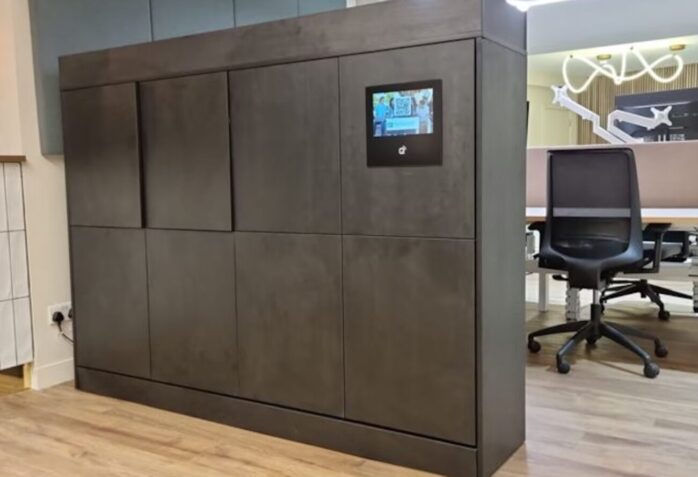
In today’s fast-paced and technology-driven world, businesses are continuously seeking innovative solutions to improve their operations and overall efficiency. One such innovation that has gained significant traction is the implementation of smart lockers in the workplace.
These intelligent storage systems not only enhance security but also offer numerous benefits that can greatly impact employee satisfaction and productivity.
In this blog post, we will explore the top ten ways smart lockers are revolutionizing workplace storage and security.
1. Enhanced Security with Advanced Authentication Methods
One of the most notable advantages of smart lockers is their ability to provide advanced authentication methods, ensuring that only authorized individuals can access their contents. Traditional lockers rely on keys or combinations, which can be lost, stolen, or shared, resulting in security breaches. On the other hand, smart lockers utilize technologies such as biometrics (fingerprint or facial recognition), RFID cards, and mobile applications to verify users’ identities. These methods are not only more secure but also offer a seamless and efficient experience for employees.
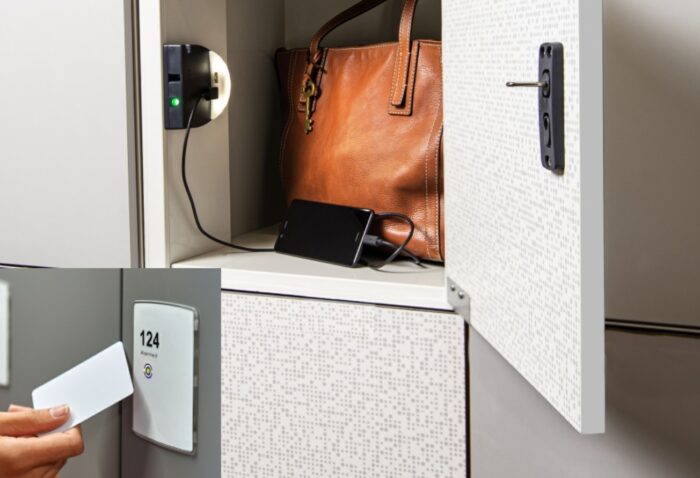
2. Streamlining the Storage Process for Increased Efficiency
Smart lockers are designed to optimize the storage process, saving employees time and reducing the potential for errors. For instance, many businesses have implemented Click n Collect systems, allowing employees to reserve lockers remotely via a mobile app or website. Upon arrival, they can easily locate their assigned locker using the app’s map and access it with their chosen authentication method. This streamlined process not only saves time but also prevents the frustration of searching for an available locker or misplacing belongings.
3. Reducing the Risk of Theft and Loss in the Workplace
Workplace theft and loss of personal belongings can be significant issues, leading to decreased morale and trust among employees. By providing secure storage solutions, smart lockers can help to mitigate these problems. The advanced authentication methods mentioned earlier, combined with real-time monitoring and reporting, make it increasingly difficult for unauthorized individuals to access lockers. Additionally, smart lockers often feature built-in cameras and alarm systems that can be triggered in case of any suspicious activity, further deterring theft.
4. Customizable Access Control for Improved Privacy
Smart lockers offer a level of customization that traditional storage solutions simply cannot match. Administrators can easily configure access controls to ensure that employees have access to specific lockers or areas within a locker system. This level of control can be especially beneficial in workplaces that handle sensitive information or require strict privacy measures. For example, a company dealing with confidential client data could restrict access to certain lockers to employees who have completed the necessary security clearance.
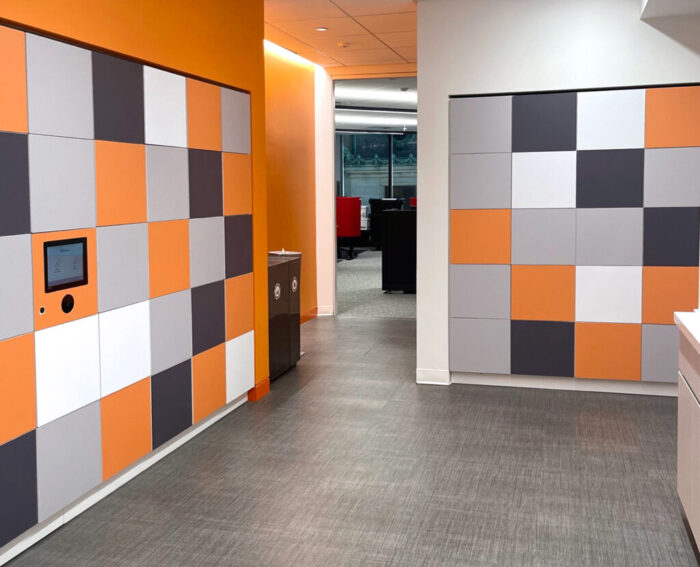
5. Real-time Monitoring and Reporting for Proactive Management
With detailed usage statistics, they can identify trends, anticipate future needs, and optimize locker allocations. Moreover, real-time monitoring can help to identify potential security risks or unauthorized access attempts, allowing for swift action and minimizing the impact of any incidents. This level of oversight not only helps to maintain security but also ensures the efficient use of available storage space.
6. Space Optimization through Modular and Scalable Designs
Smart lockers are designed with modularity and scalability in mind, allowing businesses to make the most of their available space. Their flexible configurations can easily accommodate different workplace layouts and adapt to changing needs. For instance, a company experiencing rapid growth may need to expand its locker system to accommodate an increasing number of employees. With smart lockers, this expansion can be easily achieved by adding additional modules, without the need for extensive renovations or disruptions to the existing system.
7. Integration with IoT and Smart Building Technologies
As workplaces become increasingly connected through the Internet of Things (IoT) and smart building technologies, smart lockers are well-equipped to integrate seamlessly into these modern environments. By connecting with building management systems, smart lockers can contribute to energy efficiency efforts, adjusting their lighting or ventilation based on occupancy. Additionally, integration with other smart devices, such as security systems or room booking platforms, can further streamline workplace operations and improve overall efficiency.
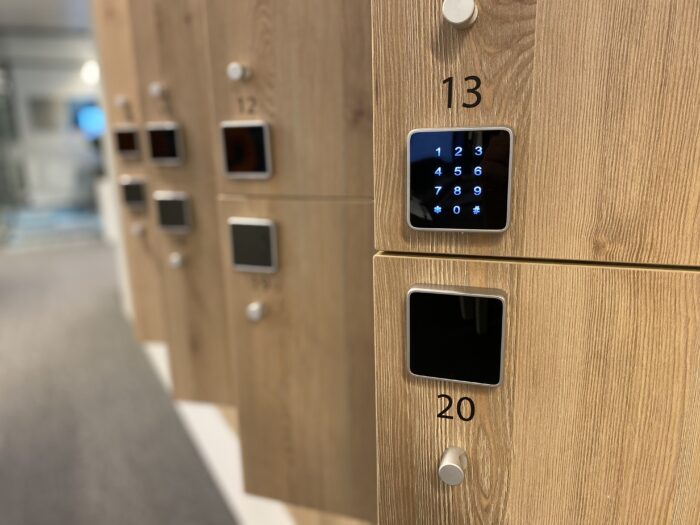
8. Boosting Employee Satisfaction with Convenient and User-friendly Features
A well-organized and secure storage system can greatly impact employee satisfaction, as it helps to create a more pleasant and efficient work environment. Smart lockers offer a host of user-friendly features that cater to the needs of today’s employees, such as mobile app integration, touchless access, and personalized storage options. By providing a seamless and convenient experience, these units can contribute to increased employee happiness and productivity.
9. Eco-friendly Solutions for a Sustainable Work Environment
Implementing smart lockers can also contribute to a company’s sustainability efforts, as these systems are designed with energy efficiency and eco-friendliness in mind. Many lockers are equipped with energy-saving features, such as LED lighting and motion sensors that activate only when needed, reducing electricity consumption. Additionally, the modular design of smart lockers allows for easy upgrades or expansions, limiting waste and promoting a more sustainable approach to workplace storage.
10. Future-proofing Storage and Security with Smart Locker Innovations
As technology continues to evolve, smart lockers are poised to adapt and grow alongside these advancements. By investing in intelligent storage solutions, businesses can future-proof their workplace storage and security needs. With ongoing developments in IoT, artificial intelligence, and biometrics, smart lockers will continue to incorporate cutting-edge features, ensuring that they remain relevant and valuable assets for years to come.
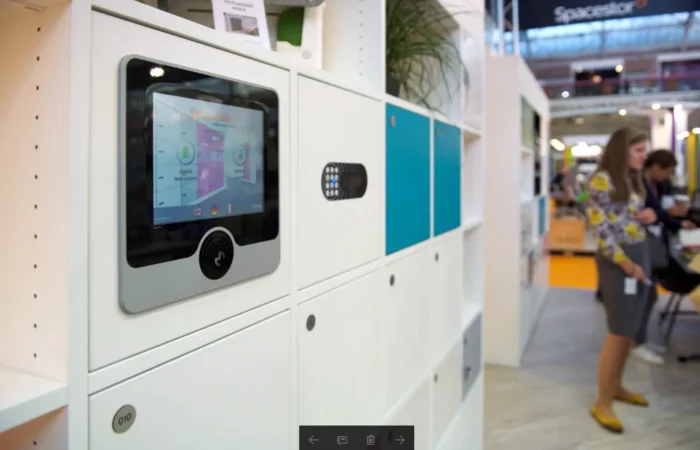
What are the benefits?
For instance, in healthcare settings, smart lockers can be used to securely store medication or medical equipment, ensuring that they are readily available when needed. In retail, they can serve as a convenient solution for customers, allowing them to retrieve their purchases at their leisure. In education, they can provide a secure storage solution for student’s personal belongings, such as laptops or textbooks.
Another benefit is their potential to reduce costs associated with traditional storage solutions. By utilizing a more efficient and customizable system, businesses can save on overhead costs such as maintenance, repairs, and replacement. Additionally, smart lockers can help to reduce the need for physical storage space, which can be a valuable resource in crowded or expensive urban environments.
Moreover, they can be a powerful tool for employee wellness and productivity. By providing secure and easily accessible storage for personal items such as gym bags or snacks, businesses can encourage healthy habits and a more balanced work-life balance. Additionally, the user-friendly features of smart lockers, such as personalized storage options and mobile app integration, can help to reduce stress and boost employee morale.
Conclusion
The implementation of smart lockers in the workplace offers a multitude of benefits, ranging from enhanced security and increased efficiency to improved employee satisfaction and eco-friendliness. As companies continue to embrace innovative technologies, smart lockers will undoubtedly play a pivotal role in revolutionizing workplace storage and security. By investing in these advanced systems, businesses can create a safer, more efficient, and more sustainable work environment for their employees.





